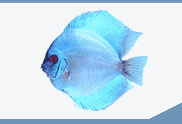

 |
||||||||||||
 |
||||||||||||
| The Use of Salt in Aquaculture | ||||||
| Page 4 of 5 | Pages: 1 . 2 . 3 . 4 . 5 | |||||
SUMMARY Salt has many uses in modern aquaculture. Although FDA has not approved the use of salt as a "drug" to treat fish, the agency has designated salt as a compound of "low regulatory priority." Salt is inexpensive, readily available, and, when properly administered, safe for use in freshwater fish. Therapeutic uses for salt include parasite control, osmoregulatory stabilization, mucus production, and alleviation of methemoglobinemia in freshwater fish. Salt concentration should be based on intended use, duration of exposure, and tolerance of the species to be treated. Table 1: Using Salt to Prevent Brown Blood Disease
Example 1: Salt should be added to a fish pond containing less than 20 ppm chloride. Table 2: Using Salt to Control Brown Blood Disease
Example 2: To control mortality from brown blood disease, increase chloride concentration to 6 times that of nitrite. Add salt to increase chloride level. more ... |
 |
|||||
| About Us :: Message Board :: Chat | |||||
| Library :: Photo Gallery :: Links & Resources :: Breeders & Sponsors :: Merchandise | |||||
| Website designed by: EthanCote.com | � 2001-2004, SimplyDiscus.com. All Rights Reserved. | ||||